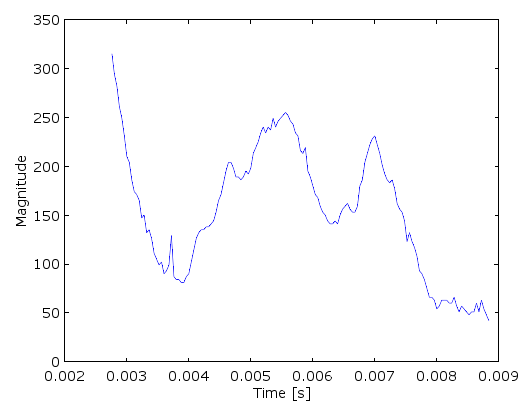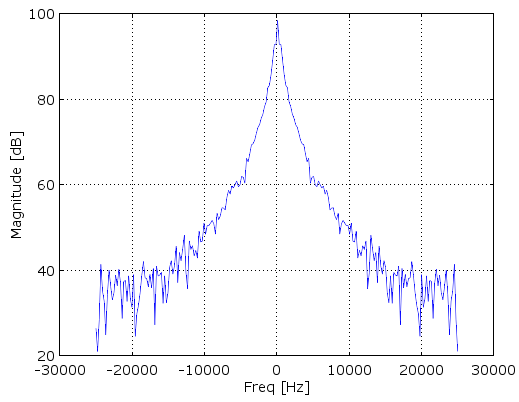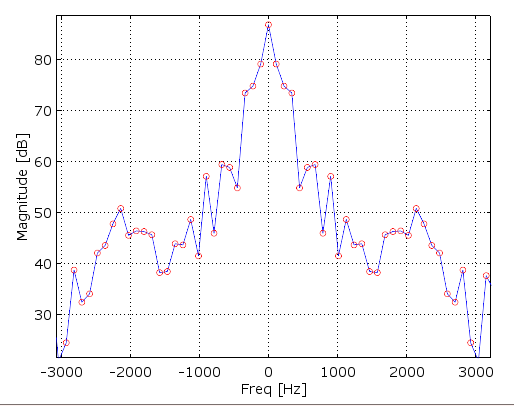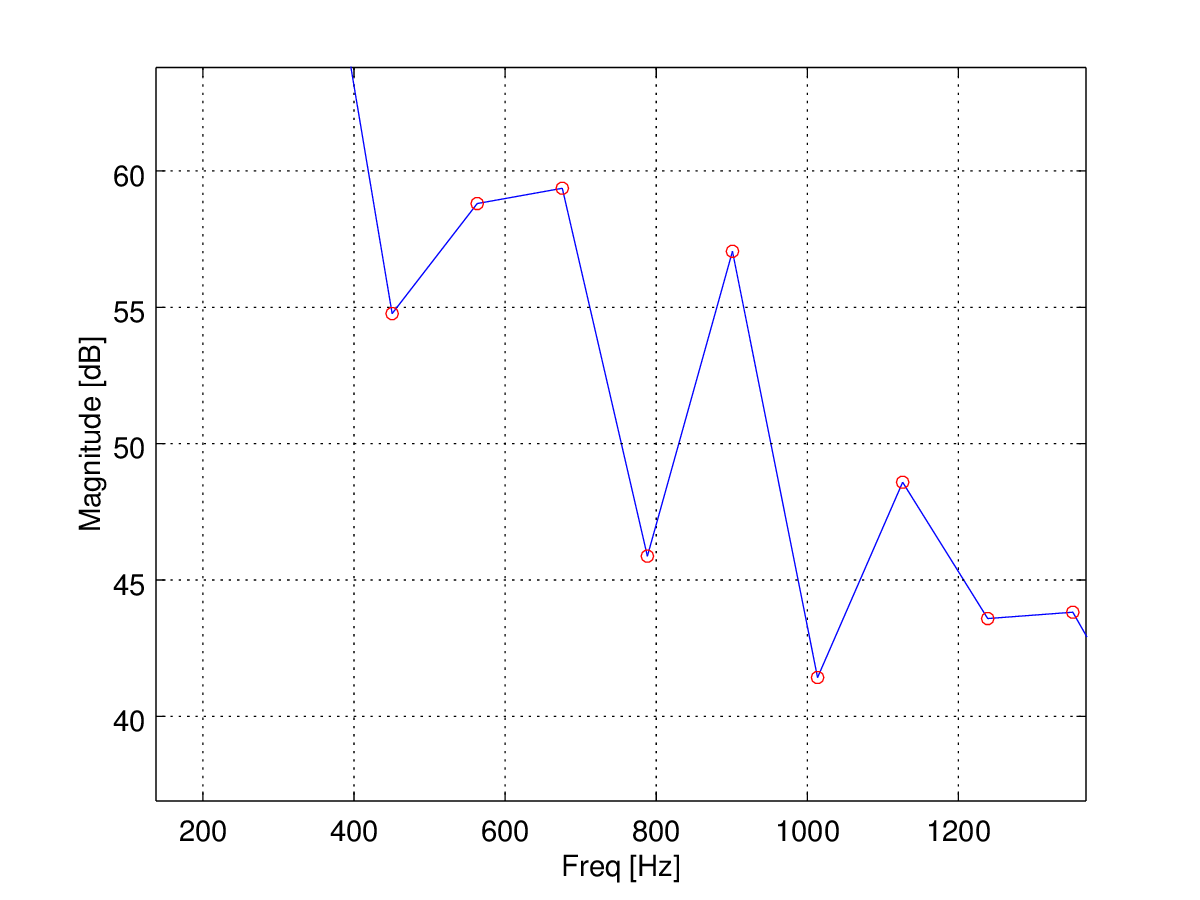Currently, I am facing a problem about understanding FFT concept and getting exact frequency with acoustic emission sensor data(VDC RMS data).
I want to measure the sound frequency from the acoustic emission sensor VDC RMS data. I am using 8152C Kistler sensor with 5125C0 coupler.I got VDC RMS (Voltage) data from a sensor and saved into an array(ADC output). The below data has 2 types of sounds. I want to know the exact frequency of both sounds.The sampling frequency is $25\textrm{ kHz}$.
- Is FFT suitable for finding the exact frequency ?
- How to differentiate different sounds from the sensor?(The VDC RMS is varying with same sound also)
First recorded sound data:
(42,78,111,153,651,1926,3234,4575,5880,7212,8550,9795,10986,12099,12285,12285,12285,12285,12285,12285,12285,12285,12285,12285,12285,12285,12285,12285,12285,12285,12285,12285,12285,12285,11961,11472,10926,10449,9984,9546,9111,8691,8289,7875,7512,7164,6819,6510,6168,5877,5595,5319,5061,4809,4563,4326,4104,3897,3693,3495,3312,3129,2967,2799,2646,2514,2370,2247,2124,2010,1902,1794,1698,1596,1506,1419,1344,1278,1101,1149,1086,1029,972,912,858,813,768,738,711,693,663,636,609,582,555,531,465,498,480,480,453,429,411,381,363,405,318,297,270,246,228,201,180,165,141,126,105,90,72,57,39,33)
Second recorded sound data
(33,39,45,96,135,159,183,201,207,201,210,204,198,189,177,168,147,324,693,1062,1356,1572,1737,1851,1935,1980,2001,2001,1980,1944,1893,1830,1755,1692,1620,1557,1488,1422,1359,1299,1236,1179,1125,1080,1029,984,951,909,858,831,798,753,726,690,654,627,609,579,558,525,504,480,459,435,414,390,369,345,333,315,294,282,261,249,231,210,204,186,174,171,165,147,150,132,135,126,111,105,99,102,90,93,99,129,87,84,84,81,81,87,90,102,114,126,132,135,135,138,138,141,144,153,165,171,183,195,204,204,198,189,189,186,189,195,192,198,213,219,225,234,240,234,240,237,249,240,246,249,252,255,252,246,243,234,231,216,213,219,195,189,180,171,168,159,153,150,144,141,141,144,141,150,156,159,162,156,153,153,159,180,186,204,213,222,228,231,222,213,201,192,186,183,186,177,162,156,153,144,123,132,123,117,108,93,90,84,75,66,66,63,54,57,63,63,63,60,60,66,57,51,57,54,51,48,51,51,60,51,63,54,48,42)







